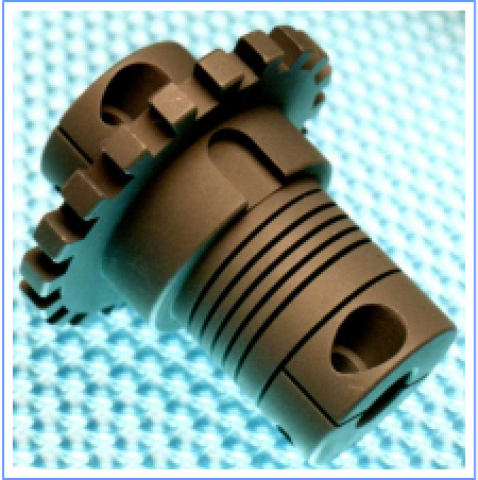
Sometimes an application can benefit from a little flexibility. That flexibility may also be needed at a post design stage, which can then not be placed within the system without major changes to the original design. This is where we can help.
One of the greatest advantages of the specialist flexure beam product is in its ability to adapt into applications where simply others can not follow. Using the advanced and unique solution we can help by actually generating the flexure into your part and adding a predetermined flexibility.
The process maintains a one piece integrity, whilst the flexure, by the nature of its design, provides a constant torque delivery. Low radial loads during rotation means that it does not require lubrication and is silent during operation. The performance capability of each flexure is determined by six major characteristics:
 |  |
| The Coil Width - By varying the thickness of the coils a flexure can accommodate increasing amounts of torque and radial loads. | The Number of Coils - When the number of coils is changed, the torque capability remains unchanged but the angular, parallel and skewed offset capability increases. |
 |  |
| The Inside Diameter - When the inside diameter changes, so does the torque capacity, torsional stiffness and axial spring rate | The Number of Coil Starts - One, two or three helical beams provide higher torsional stiffness. |
By altering these characteristics, torque capacity, angular and parallel misalignment capabilities and torsional stiffness rates can be modified to suit specific specifications. These characteristics apply to both miniature and large applications.
A great example of where this product enhancement was recently used was on a laser control adjustment shaft which is used to exert high radial loads within the system. At the post design stage, the customer required a precision adjustment as well as a smooth method to accommodate for misalignment's within the system. The solution was to take the customers shaft and generate a high torsional stiffness coil configuration flexure within their part.
Mars Curiosity Robot - A custom Heli-Cal shaft flexible coupling is used in the Vibration Mechanism in the Sample Acquisition & Sample Processing and Handling (SASPaH) subsystem at the end of the Robotic Arm. This system, located at the front of the rover, is responsible for gathering soil samples from Mars’ rocky surface. Vibration, aided by the flexible coupling, is utilized to pass the powder through sifters and ultimately through the sampling system. From there, these particles are then processed and examined with the rover’s analytical instruments. In addition to flexible couplings, the Curiosity Rover is also equipped with several Heli-Cal Machined Springs. These particular devices are used as a locking latch in the rocket deploy pivot mechanism. Once the rover was deployed on Mars, the pivot rotated and the latch locked it in place.
.jpg)





